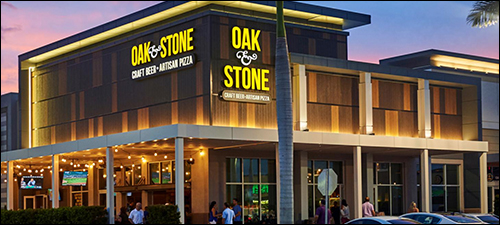Restaurant companies often mine consumer data to make core decisions regarding how they can serve the specific clientele at each of their town or neighborhood locations, and sometimes whether those demographics will work for their services at all. In many cases, restaurants pay for data that may be based on polls not specific to their restaurant or the locations they are considering.
Oak & Stone has taken a different approach by leveraging passive UHF RFID technology from iPourIt for self-serve walls at the company’s first two establishments. The restaurant chain has one establishment in Sarasota, Fla., with a beer wall that, for the past two years, has leveraged RFID technology to provide patrons with self-service capability. The data that the business can gather includes the demographics of beer and cider drinkers, including their age, gender and residential area. This data is linked to their beverages of choice, as well as how much they actually drink of each product.

This information enables Oak & Stone to better understand its clientele and what they want, and to deliver it to them. In so doing—and, at the same time, by making the craft beers in the wall available to patrons at the single ounce level—the company has increased beer sales, according to Joe Seidensticker, Oak & Stone’s co-owner. The firm opened its second restaurant this month, which contains nearly 60 self-serve taps and utilizes RFID technology to provide customers with access to those beers.
When patrons arrive at the restaurant, they can simply order food and related beverages in the traditional way: from a food server at a table. Those who wish to sample a craft beer or cider can take things into their own hands by presenting a driver’s license and a credit card to a bartender or another restaurant employee. The worker scans the license’s bar code, as well as the user’s credit card, and then provides a wristband that comes with a built-in RFID tag. The data is stored in the cloud-based iPourIt software, and the user is permitted to pour up to 40 ounces of beer or cider.
The customer can next proceed to the beer wall, which features a row of nearly 60 taps, each of which dispenses rotating American brews. Every tap comes with its own dedicated reader antenna, as well as a tablet-sized display (known as an iPourIt Taplet) in front of the reader antenna. The display lists the name and other information about the specific beer or cider connected to that tap. Most drinks are locally brewed by small craft companies, Seidensticker says.
The beer wall offers drinkers an opportunity to sample a beverage before committing to buying an entire glass, Seidensticker explains. Before pouring a $10 or $12 pint, for instance, a customer could try an ounce and decide whether or not to order more. “The craft beer scene has been booming,” he states, and while some restaurants are adding beer walls to their bars or restaurants to provide craft beer sampling and serving, “We decided if we do it, we should go all in.”
The St. Petersburg beer wall is a centerpiece of the restaurant, Seidensticker says, covering several actual walls, with an arrangement of dark beers transitioning to lighter beers and ciders for ease of use. Selecting beverages can be intimidating, he notes, so the system is designed to make this process easy.
The solution leverages the iPourIt app to improve the experience for visitors. With the app, they can use the system to look up which beers they have previously purchased, In that way, then can better know what they want to order upon their return—and the restaurant can analyze the collected data to better market to its clientele.
“It allows us to look at the demographics and understand who is there, who is drinking beer and what kind,” Seidensticker explains. With this data, the company knows not only the age and gender of each patron, but whether its customers are Florida locals or visitors from other parts of the country, as well as their interests and when they tend to be in town. “That’s just gold for someone in our business,” he states.
With the system now in place at two restaurants Seidensticker says he has seen some interesting data. For instance, he reports, cider sells more heavily than he would have expected, and is typically preferred by women. What’s more, local breweries are outselling other beer makers whose products they’ve sold.
“There’ no question we sell more beer with the beer wall,” Seidensticker adds. While similar restaurants tend to gain 3 to 5 percent of their revenue from beer, he says, that number is close to 25 percent thanks to beer wall. “We sell hundreds of thousands of ounces every month.” Still, he plans to further develop the product offerings based on the data provided by the system. “The coolest part of this, for me, is that data—that’s really interesting, and I’m looking forward to doing more with it.”
The wristbands are provided by ID&C, located in Sarasota, and are custom-made for Oak & Stone. The restaurant encourages patrons to leave the bands when they finish their meal or drinks, so that they can be reused. But in some cases, Seidensticker says, customers reuse their wristbands by taking them home and re-wearing them for their next visit—in part, he notes, because the bracelets have an appealing look.

